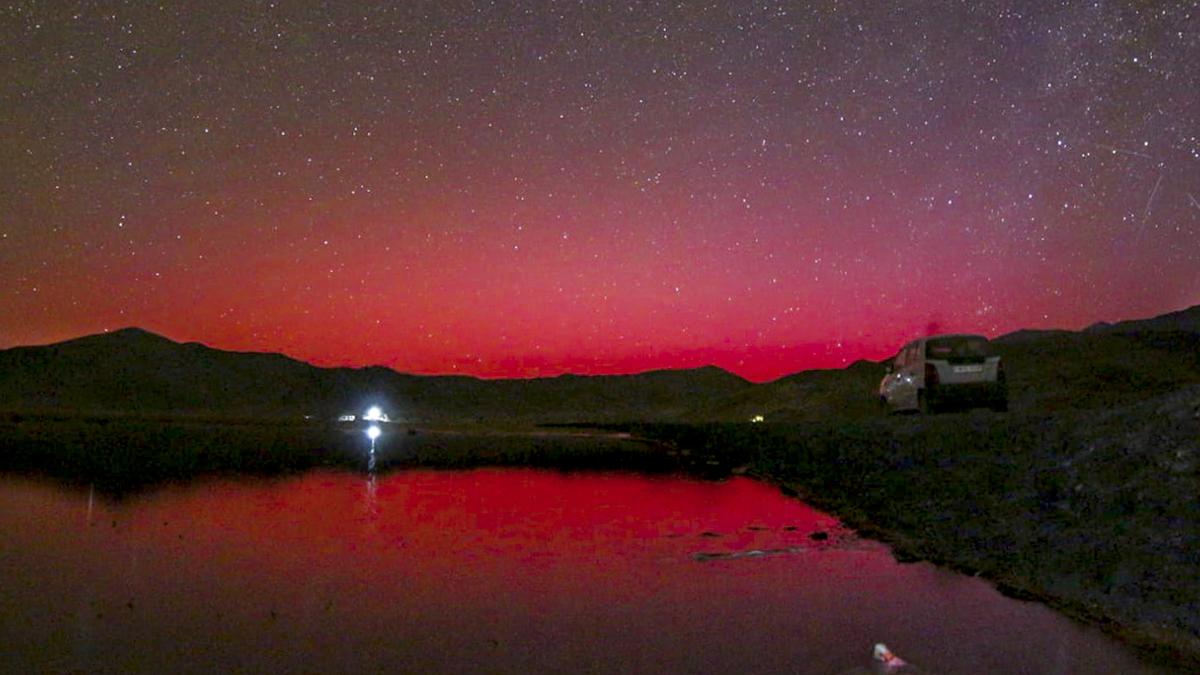
More solar storms brewing after last week’s aurorae as Sun ‘wakes up’ Premium
The Hindu
Rare red aurorae seen worldwide, triggered by solar storms, pose risks to Earth's technology; scientists aim to predict them.
On Friday night, people from across the world were treated to a rare spectacle: vivid aurorae hanging like curtains of light in the sky. They appeared even in places where aurorae aren’t usually visible. For instance, people at the Indian Astronomical Observatory spotted an aurora over Hanle in Ladakh — far away from places near the poles, where they are a more common sight.
“I haven’t seen anything like this in the last 20 years,” says Dibyendu Nandi, a space physicist at the Indian Institute of Scientific Education and Research (IISER), Kolkata.
Beautiful though the aurorae are, the events on the Sun that produce them can trigger blackouts on the earth, knock out satellites in space, endanger the lives of astronauts, and affect space weather throughout the Solar System. Studying, understanding, and, in future, predicting them is thus a key goal of solar physics research.
Aurorae like these are created when some violent events on the Sun’s surface throw up a mass of charged particles into space. A geomagnetic storm happens on the earth when these particles become trapped in the planet’s magnetic field and interact with atoms in the upper atmosphere. These interactions finally produce aurorae.
These storms are rare, occurring around once in a few decades. The last time charged particles from the Sun blew into the earth with similar energy and intensity was in 2003. And both events happened as the Sun was nearing the peak of its solar cycle — an 11-year period during which the star’s magnetic field flips.
The peak is when the flip actually happens, creating magnetically active patches on the star’s surface called sunspots. These sunspots grow and shrink as solar cycles begin and end. The charged particles that struck the earth on May 10 are rooted in events at these sunspots.
“This is definitely a sign that the Sun is ‘waking up’ and is becoming more active, especially compared to the last solar cycle,” Jonathon Eastwood, a space physicist at Imperial College London, the UK, said.











